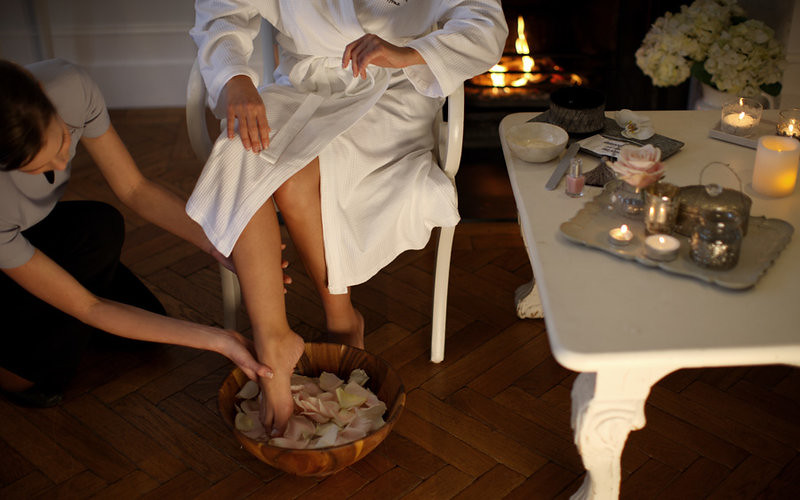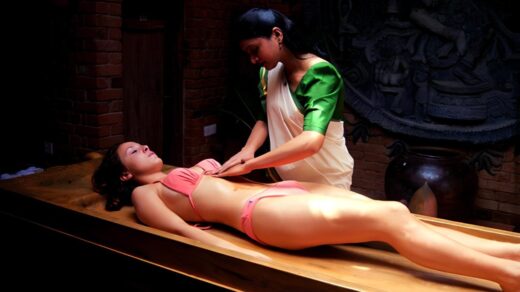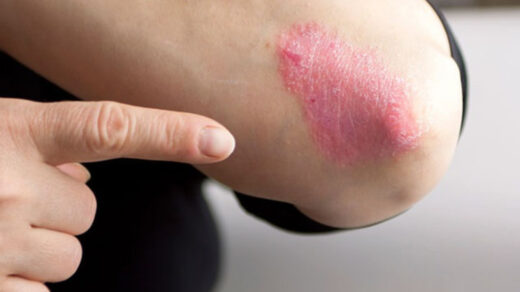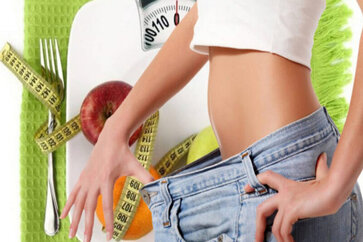Pad Abhyanga Massage – Ayurvedic Kasa Bowl Foot Massage Benefits
There are many spiritual traditions around the world that believe that the body and soul are connected to the soles of the feet and even embodied in them. It has been found that from the century’s devotees around the world kiss, touch or wash the feet of their teachers (guru) the way to show love and respect to them.

It has also been found that Vishnu’s footprints are worshiped in temples in every holy site across Asia. In ancient Egypt, undertakers do use to remove the soles of the deceased during mummification to free their souls from the physical plane.
Now a day’s scientist does believe that this ancient tradition of feet serving wisdom can help a lot in the conditions such as diabetes, arthritis, circulatory, and nerve disorders, it shows the initial symptoms in the feet, so the feet may be the first sign of more serious medical problems. Today “The American Podiatric Medical Association” does support this wisdom of feet serve.
Ayurvedic view
Ayurveda emphasizes the importance of foot massage, as it is essential to strengthen the nerves and restore vitality. Ayurveda has a long traditional foot massage therapy called “Padabhyanga” which can be traced back 5000 years.
It believes that performing foot massage can offer many health benefits, such as; it improves blood and lymphatic circulation, nourishes the skin, and calms the restless mind. Foot massaging can relax the muscles of the feet and legs it can help to relieve stress and its related ailments such as depression anxiety, nervousness, etc.
The therapy called Padabhyanga is also known to be very beneficial in balancing the doshas. It is the best-suggested solution for people suffering from chronic fatigue, frequent cramps, various sleep disorders, including insomnia.
How Does Foot Massage Works?
In Ayurveda, our human body is compared to inverted trees which have three main parts
- The Roots (Head)
- The Branches (Upper and lower limbs)
- The Trunk (Body trunk)
The trees get nourishes from their roots and the fruits are obtained from their branches. In the same way, if proper care of the root is taken in the human body, the fruits can be obtained in the branches.
In other words, the fruits can be obtained on a tree called body is concentrated to its branches like ie hands and legs. It is, therefore, our responsibility to take proper care of roots to enjoy the fruits, ie coordinated activities such as walking, holding, etc., and other normal movement activities.
Moreover, Ayurveda also explains that in a tree if the diseased branch is found it directly reflects diseased roots. In the same way, if our body has any problems, disease or disorder may mainly reason due to the diseased roots (means in our brain) that can reflect a serious problem somewhere near it, or where its centers of governing centers are sitting.
So if proper care of the feet and maintenance of foot health is not taken it can retrograde improvisation of health, so foot health is related to general well-being.
There are many therapies and medications aimed at comprehensive foot care that has evolved over a period of time. Among all the therapy Padabhyanga in Ayurveda is known to be the mother of all therapies.
What is Padabhyanga?
The word Padabhyanga comes from the two Sanskrit words “Pada+abhyanga” “Pada” means foot and “Abhyanga” means massage. It is calming and soothing massage therapy, if done in the proper way can keep your body completely revitalized and rejuvenated.
It is also recommended as a daily ritual that has to perform before going the bed. Ayurveda narrates that there are about 107 marmas in our body among them five are located in the foot and many times, these are clogged with negative energy. Indulging this massage therapy daily will allow releasing the clogged energies.
Types of Padabhyanga Massage:
This foot massage is divided into three different components they are given below.
1.Padabhyanga With Hand
This type of massage is performed with a hand that includes rubbing and stroking on foot, the heat is generated into it so that cardiovascular circulation in the foot is performed smoothly. These friction-based movements also stimulate the flow of energy, directing it as intended.
In this type of massage, the sesame seed oil is generally used some time herbal infused oil is also used for a better cure. For certain types of ailments, herbal infused with clarified butter are also used.
2.Padabhyanga With Kasa Bowl
In this type of massage, Kasa bowls with oil-coated are wormed. Then bowl’s bottom round surfaces are used to massage the foot in circular motions, along with strokes for better blood circulation.
The Kasa bowls are metal bowls that are generally made up of copper and tin. Massaging ensures the elimination of toxins and it also invigorates nerve endings, releasing negative energy.
3.Padabhyanga Marma Therapy
In this type of massage therapy the energy points or so-called “pressure points” (Which are commonly used in acupuncture), are handled with care along with massage. Special care is taken to make sure that marma is activated.
Through this Marma Therapy, the toxins are removed while a path is carved for the elimination of negative energy. This type of full massage therapy may last up to half an hour or more.
How To Do Feet Massage At Home?
Things Required For Foot Massage
- A small tub with warm water
- Ginger
- Salt
- Towel to wipe off your feet
- Any Massage oil
Note: You can use any oil such as
- Coconut oil
- Sesame
- Mustard oil.
Note: Coconut oil and sesame oil can be best for all seasons. Mustard oil can generate heat in the body, therefore it is not advised in the summers.
Step 1: Proper Foot Soak And Relaxing Is Necessary
- Take a vessel or a tub of warm water.
- Now add some freshly crushed ginger or squeeze some ginger juice to it.
- Then add a teaspoon of sea salt into the tub and stir it well.
- Soak your feet in the tub and just get relax, be comfortable on your back on a chair, use a pillow to support your head.
- Close your eyes and simply enjoy the relaxing feeling of the soak.
Note: You can also add a few rose petals into warm water to feel the aroma and get atmospheric like a spa.
Step 2: Proper Foot Drying And Applying Of Oil
- After soaking your feet for about 20 to 30 minutes take them out and pat dry.
- Now take some massage oil in your hand and apply it liberally all over your feet.
- Ideally, you should start with your right foot, finish massaging it and then move on to your left foot.
Note: While applying oil make sure there is enough oil in the feet so that there is very little friction between the hands and feet when the massage starts.
Step 3: How To Start Massaging Your Feet?
- First begin massaging from the area around your ankles first, start from your calf ends. Apply pressure to the muscle from the base of your calf to the heel using your fingers and thumb. The movement should be down and smooth. Apply pressure you feel comfortable with.
- Now massage the part just below your ankle using your fingers and thumb, moving the fingers from the inner portion of your foot towards out.
- Then move towards the toes and massage the area between each toe with your index finger and thumb, gently press each part and pull your finger.
- Now wrap your finger around the base of your toes and pull it from the tip, gently loosening your muscles, do this for all five fingers.
- Now slide your thumb along with the tendons of your toes on the top of your foot. Be sure to use the thumb pad for this, and press gently. Begin from the waist of your fingers and press along the top of your foot to the ankle.
- After this procedure, you can move towards the foot base. Bend your leg at the knee and place your foot on the thigh of the other foot so that the bottom of your foot is facing up.
- Now just hold your foot with both hands positioning the thumbs on your sole, placing it just below the ball of your foot. Then start applying pressure on the sole moving your thumb out in opposite directions.
- Now bring your thumb to the center of your foot and massage down into the center (this point is also known as the arch of your foot). Repeat this several times and then start massaging your heels. For this particular point use the base of your palm to press, in circular movements on your heel.
- Now comes the last part of your message, entwine your fingers with your toes, passing them between your toes. Hold your foot and gently move in a clockwise direction, then anticlockwise to loosen the muscles in your ankles and feet. Then close your big toe between the palms of your feet and twist it in a similar fashion.
- Finally using the palm of your hand, massage the base of your foot by making a pattern of figure eight. Now, knock the soles of your feet to increase circulation and get rid of the excess of Vayu (the air element that is present in the body according to Ayurvedic principles) of your body.
- Complete this foot massage by repeating the entire process on the left foot.
Step 4: The Final Step Cleaning Your Feet
Use some warm water to wash your feet at the end of the massage. Do not use soap or any cream as this step is just to get rid of any excess oil on your feet. After washing your foot with warm water using a pair of soft cotton socks and finally, you are ready for a night of restful sleep with sweet dreams.
Precautions:
- Apply the pressure as you are comfortable with. Do not continue the massage if you feel any pain or discomfort.
- If you have swollen feet, it is not advisable to perform this massage.
- You can do this massage at any time of the day, but doing it just before bedtime can work great as a whole can get relax and it can aid in a good night’s rest.
- If you have injured your ankle, toes, or any other part of your foot, please do this after you have consulted a trained doctor.
Ayurveda is one of the most sought of preventive and alternative healing techniques of modern era. It is a tradition of thousands years with success. Foot massage or so called as Reflexology should be considered as a complementary treatment for formal medical advice and not as a treatment the most serious conditions.
References:
- A clinical study on combined effect of Padabhyanga and Pranayama in Nidranasha (Primary Insomnia) – Research Articl(1)
- A CLINICAL STUDY OF THE EFFECT OF TILA TAILA PADABHYANGA ON EYE STRAIN(2)
- Clinical Efficacy of Padabhyanga in Simple Myopia – A Pre-Test & Post-Test Study(3)

























